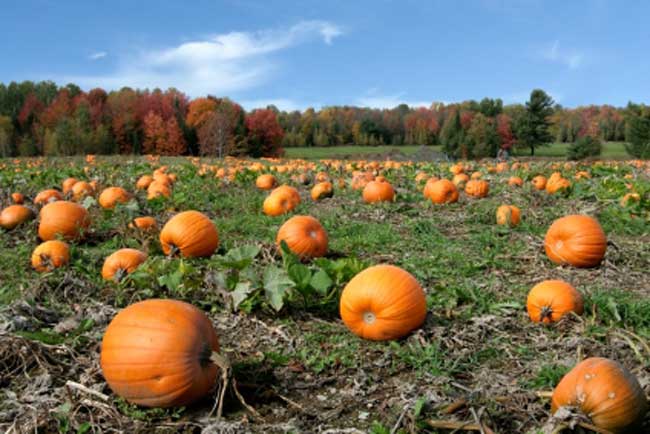Why We Carve Pumpkins, Not Turnips

Big orange veggies are pretty strange as far as holiday symbols go, but there are actual historical reasons that we carve pumpkins every Halloween.
Like Halloween itself, the display and carving of pumpkins – from the lanterns placed inside to the scary faces we pick – has pagan origins that morphed with the passage of time as well as the crossing of an ocean.
The modern traditions of Halloween have roots in a Celtic holiday called Samhain, which was celebrated throughout Western Europe (but especially Ireland) every Oct. 31 to mark the end of the summer and the final harvest.
Warding off the Otherworld
As the tipping point that also ushered in the beginning of the "dark season," it was believed that the night opened a kind of door to the Otherworld, letting spirits roam the Earth.
"The feast of Samhain was the occasion of stock-taking and in-gathering, of reorganizing communities for the winter months, including the preparation of quarters for itinerant warriors and shamans," wrote Nicholas Rogers, a historian at York University in Toronto, in his book Halloween: From Pagan Ritual to Party Night (Oxford University Press, 2002). "It was also a period of supernatural intensity, when the forces of darkness and decay were said to be abroad, spilling out from the sidh, [or] the ancient barrows or hills of the countryside."
To combat the threat, ancient Celts often held raging bonfires – fire being a common way to ward off evil spirits.
Sign up for the Live Science daily newsletter now
Get the world’s most fascinating discoveries delivered straight to your inbox.
The practice continued throughout the region even after Christianity took hold in the Middle Ages and the festival was renamed All Hallows Eve. Later, in towns, the fires shrank and were placed instead within turnips or gourds, which were inexpensive, readily available and safe "containers."
"Originally they were simply pierced to emit light, and were carried to scare away the spirits from the Otherworld who could enter the mortal realm," said Verlyn Flieger, a mythology specialist at the University of Maryland. Carving the gourds became common over time, Flieger explained. "Designed to ward off scary faces, they gradually took on the aspects of the very foes they were supposed to forestall," she told LiveScience.
Turnips to pumpkins
All Hallows Eve came to North America "by boat, like everything else, carried by European immigrants to the New World," Flieger said. The holiday exploded in the United States and Canada with the wave of Irish that came over during that country's potato famine in the mid 19th century.
The new Americans couldn't find their usual produce to carve at Halloween, however, so they turned to a reasonable fascimile.
"Gourds were scarce in the New World and turnips even scarcer, so pumpkins became the veggie of choice," said Flieger.
A few fun facts about pumpkins, according to the U.S. Census Bureau: The United States' major pumpkin states produce over one billion pounds of the vegetable annually, worth over $100 million. Illinois produces more pumpkins than any other American state. California, Michigan, Ohio, Pennsylvania and New York also contribute healthy crops.
The largest pumpkin on record is a 1,725 pound behemoth grown in the summer of this year in Ohio.
- Top 10 Most Famous Ghosts
- Halloween's Top 10 Scary Creatures
- Halloween News & Information










